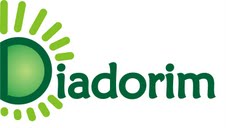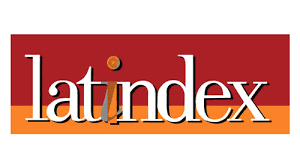COMPARISON OF VOID FRACTION CORRELATIONS FOR DRIFT-FLUX MODEL IN VERTICAL UPWARD FLOW
DOI:
https://doi.org/10.26512/ripe.v2i12.21344Keywords:
Drift-flux model. Flow pattern dependence. Isothermal flow.Abstract
Multiphase flow is a common phenomenon that occurs in a variety of industries, such as petrochemical, refrigeration and chemical. The gas-liquid flows have a spatial and temporal phase distributions in a pipe section, which are related to the phases velocities, thermophysical properties and pipe geometry. Bhagwat and Ghajar (2014) developed a flow pattern independent void fraction correlation using a wide range of literature database in order to estimate the parameters of the drift-flux model, i.e., distribution parameter and local drift velocity. The main objective of this study is to compare the results of total pressure drop applying their set equation with the results using the classical parameters of drift-flux model dependent flow pattern simulated by Lima (2011) and experimental data collected by this author, Bueno (2010), Rosa and Mastelari (2008) and Owen (1986). A steady, onedimensional and isothermal air-water flow through pipes with 0.026m and 0.032m internal diameters were assumed. The frictional pressure drop was estimated using the homogenous approach. The expected result with this analysis is to verify the possibility of despising the use of flow pattern maps in the description of the air-water hydrodynamic behavior.
Downloads
References
Bai, Y., Bai, Q., 2005. Subsea Pipelines and Risers. Elsevier.
Beggs, H. D., Brill, J. P., 1973. A study of two-phase flow in inclined pipes. J. of Petroleum Technology, vol. 25, n. 5, pp. 607-617.
Bhagwat, S. M., Ghajar, A. J., 2014. A flow pattern independent drift flux model based void fraction correlation for a wide range of gas-liquid two phase flow. Int. J. of Multiphase Flow, vol. 59, pp. 186-205.
Bueno, L. G. G., 2010. Estudo Experimental de Escoamentos Líquido-Gás Intermitentes Em Tubulações Inclinadas. Master thesis, State University of Campinas.
Dukler, A. E., Wicks, M., Cleveland, R. G., 1964. Frictional pressure drop in 2-phase flow: B. an approach through similarity analysis. AIChE J., vol. 10, n. 1, pp. 44-51.
França, F., Lahey, R., 1992. The use of drift-flux techniques for the analysis of horizontal two-phase flows. Int. J. of Multiphase Flow, vol. 18, n. 6, pp. 787-801.
Friedel, L., 1979. Improved friction pressure drop correlations for horizontal and vertical two-phase pipe flow. European two-phase flow group meeting, Italy, Paper E2, pp. 485-492.
Haaland, S. E., 1983. Simple and explicit formulas for the friction fator in turbulent pipe flow. J. of Fluids Engineering, vol. 105, n. 1, pp. 89-90.
Ishii, M., Hibiki, T., 2010. Thermo-Fluid Dynamics of Two-Phase Flow. Springer.
Kataoka, I., Ishii, M., 1987. Drift flux model for large diameter pipe and new correlation for pool void fraction. Int. J. Heat Mass Transfer, vol. 30, n. 9, pp. 1927-1939.
Lima, L. E. M., 2011. Análise do Modelo de Mistura Aplicado em Escoamentos Isotérmicos Gás-Líquido. PhD thesis, State University of Campinas.
Owen, D. G., 1986. An experimental and theoretical analysis of equilibrium annular flows. PhD thesis. University of Birmingham.
Rosa, E. S.; Mastelari, N., 2008. Desenvolvimento de Técnicas de Medidas, Instrumentação e Medidas em Escoamentos de Golfadas de Líquido e Gás em Linhas Vertical e Inclinada. Campinas, 248 p. III Relatório.
Zuber, N., Findlay, J., 1965. Average volume concentration in two phase systems. J. of Heat Transfer, vol. 87, n. 4, pp. 453-468.
Downloads
Published
How to Cite
Issue
Section
License
Given the public access policy of the journal, the use of the published texts is free, with the obligation of recognizing the original authorship and the first publication in this journal. The authors of the published contributions are entirely and exclusively responsible for their contents.
1. The authors authorize the publication of the article in this journal.
2. The authors guarantee that the contribution is original, and take full responsibility for its content in case of impugnation by third parties.
3. The authors guarantee that the contribution is not under evaluation in another journal.
4. The authors keep the copyright and convey to the journal the right of first publication, the work being licensed under a Creative Commons Attribution License-BY.
5. The authors are allowed and stimulated to publicize and distribute their work on-line after the publication in the journal.
6. The authors of the approved works authorize the journal to distribute their content, after publication, for reproduction in content indexes, virtual libraries and similars.
7. The editors reserve the right to make adjustments to the text and to adequate the article to the editorial rules of the journal.









